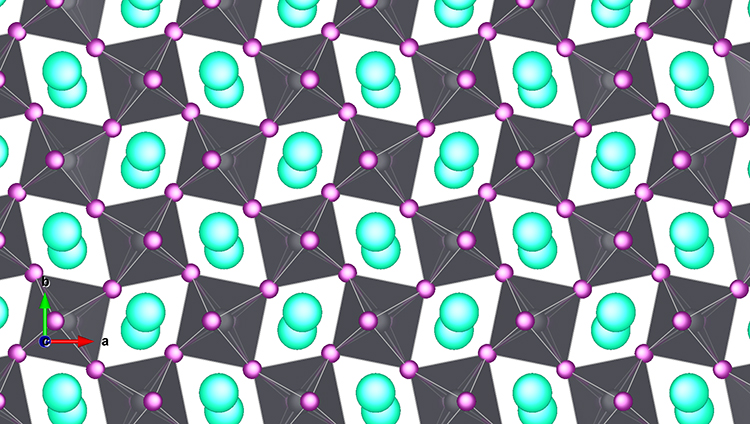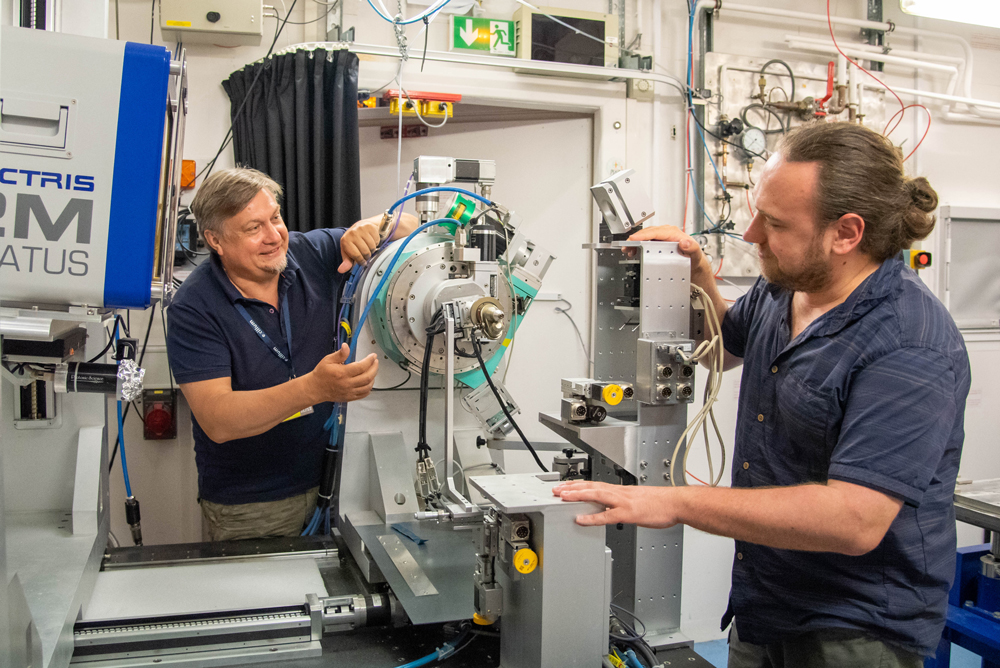- Home
- News
- General News
- Going black to see...
Going black to see the light: making stable perovskites for solar cells
26-07-2019
Perovskites are up-and-coming materials for solar cells. CsPbI3 harvest the light through a black phase, which is unstable at room temperature. Researchers, led by the KU Leuven, have found a way of stabilizing the black form of the metal halide perovskite, using the Swiss-Norwegian beamline at the ESRF and the ALBA synchrotron. Their results are published today in Science.
Perovskites are promising candidates for photovoltaic cells, having reached an energy harvesting efficiency of 24% and have recently entered the commercial market. Their success stems from the fact they are cheap, easy to synthesize and manufacture and display promising optical properties, namely light absorption, charge-carrier mobilities and lifetime. However, applications of these materials are still limited by their instability within real-world devices.
The instability is coming partly from the polymorphic nature of the perovskite crystal structure, which is one of the major limitations of finding device-ready perovskites. At ambient temperature, the perovskite structure should be optically active. However, some perovskites, like cesium lead triiodide (CsPbI3), form a non-perovskite crystal structure, which is yellow. This makes them unsuitable for use in optoelectronic devices like solar cells. Upon heating the yellow phase, it transforms into a black perovskite that shows desirable optical activity. The issue is then how to form a stable black CsPbI3 perovskite that could operate in devices at near room temperature.
 |
|
Crystal structure of Cesium (teal) Lead (black) Iodide (purple) perovskite in the room-temperature black phase. |
A team of researchers from the KU Leuven and Ghent University, the Swiss-Norwegian beamline (BM01) at the ESRF, the ALBA Synchrotron, the Western Washington University, the University of Toronto, Universidad Castilla-La Mancha and Nanjing University have found a way of stabilizing the black phase of CsPbI3 at room temperature, thanks to experiments at the ESRF’s Swiss-Norwegian beamline and the ALBA Synchrotron. “The key is in the planar architecture of perovskite solar cell devices, which can help stabilize black CsPbI3 thin films”, explains Julian Steele, corresponding author of the study. The team showed that by forming a strong junction between the perovskite film and the glass substrate on which it sits, large clamping strains are introduced, shifting its thermodynamic preference toward the desired black phase.
 |
|
Dmitry Chernyshov (left) and Vadim Diadkin inside the experimental hutch of BM01, the Swiss-Norwegian beamline. ©ESRF/C. Argoud. |
At the two light sources, the scientists heated the samples to 330ºC, and then they rapidly cooled them to ambient conditions to strain and clamp them on the glass substrate. This substrate helps to maintain the desired ordered structure of the CsPbI3 black phase, defining and translating large strain into the perovskite crystal.
Synchrotron experiments using the technique of GI-WAXS (grazing incidence wide angle X-ray scattering) provided average information of the perovskite crystallites during their formation thanks to the large footprint of the X-rays. “At BM01, the diffraction data were collected in situ during thermal treatment of the thin film with a Pilatus2M detector. The experiment readily uncovered phase transformations, formation of texture, spontaneous and clumping strains, and finally evidenced trapping of the black phase. One of the important components is efficient data processing developed at the beamline that allows fast access to results”. Dmitry Chernyshov, scientist in charge of the beamline, says. In a final step, collaborators at Ghent University, led by Veronique Van Speybroeck, theoretically supported these findings and confirmed the beneficial influence of substrate clamping and introduced strains towards black-phase formation.
These results confirm that strain engineering is a tool to enable the design of stable optoelectronic devices. “The proposed mechanism is fundamental and different to other stabilization methods, which typically involve altered chemistry and material morphology”, explains Steele. “It will help widen the design options for future, stable perovskite-based solar cells”, he concludes.
Reference:
Steele, J.A. et al, Science, 25 July 2019, DOI: 10.1126/science.aax3878



